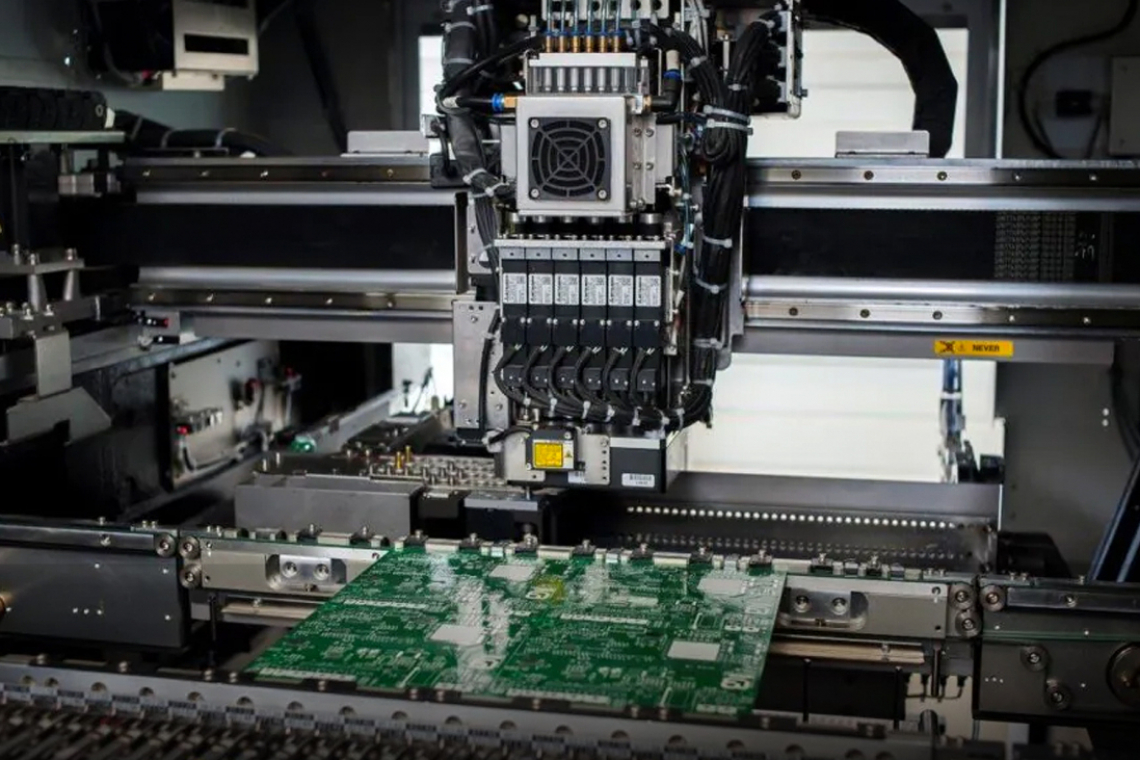The annual survey of the European EMS industry conducted jointly by IPC and in4ma has been completed. The high level of participation (over 62% of production volumes in Germany and almost 80% in Austria) allows the results to be extrapolated to the market as a whole.
In Germany, the industry increased its turnover by approx. 13.5 % from € 9.4 billion to € 10.6 billion. Employment rose from approx. 43,400 employees to 48,300 employees, an impressive increase of 11.5%. The order backlog fell significantly by around 35% and has returned to a normal level, resulting in reasonable delivery times. Accordingly, the book-to-bill ratio fell significantly to 0.82.
Inventories of raw materials and supplies are still excessive and signal a need for action. In terms of market segments, the automotive industry, mobility, industry and energy sectors in particular grew, while telecommunications weakened significantly.
In Austria, sales in the EMS industry rose from € 1.45 billion to € 1.61 billion, an increase of 10.5%. The number of employees rose from 4,965 to just under 5,300, an increase of 6.6%. The order backlog fell significantly by over 41% and returned to normal order backlog levels. The book-to-bill ratio fell to 0.88.
In terms of market segments, industrial electronics and the automotive industry in particular recorded robust double-digit growth. Medical technology, which is dominated in Austria by one very large EMS company in particular, also grew by 7.8%.
As always, the results of the annual survey vary greatly depending on the size of the company. In Germany, the results of the 112 companies that took part in the survey were divided into six different turnover groups so that the survey results of the smaller companies are not masked by the reporting figures of the larger ones. In addition, individual parameters were presented as a histogram so that each market participant can assess for themselves where they stood in the market in 2023. In Austria, the reporting figures of the 15 reporting companies were divided into two turnover groups.
Is all right with the world again?
With these good figures, you would think that all is well in the world again - also because the European figures are comparable. The EMS industry in Europe grew by 13.9 % in 2022 and by ~10.9 % in 2023. According to the in4ma semi-annual surveys 2022/23, 1/3 was due to price increases and 2/3 to volume growth. This means 9.3 % volume growth for 2022, a figure that the EMS industry has not achieved in the last ten years. At the same time, we all remember that there was a chip crisis. Automatically, we ask ourselves where the semiconductors came from to make this growth possible?
The semiconductor industry already increased its volume output by 21.6 % in 2021 (source: IC Insights). In 2023, many companies were suddenly surprised that the semiconductors they urgently needed, which were finally being delivered, had relatively old date codes.
 Robust growth can also be seen in medical technology
Robust growth can also be seen in medical technology
All the talk of the chip crisis in 2021 and 2022 led to artificially inflated panic orders from OEM buyers who wanted to ensure their company had sufficient supply. The EMS industry delivered in quantities that had never been achieved in previous years. At the same time, they were pleased with the high order backlogs, some of which had a range of more than two years.
OEMs' warehouses filled up and, from 2023, OEMs realized that there were no supply problems. New orders were not placed, existing orders would have preferred to be canceled, but were at least able to postpone delivery dates in negotiations, in some cases by more than nine months after 2024. Some listed EMSs had to publish sales and profit warnings as a result. This was already noticeable among the smaller EMS in the second half of 2023, and nervousness arose. The effects are now also visible among global EMS. Jabil published its results for the second financial quarter (Dec. 23 to Feb. 24) at the beginning of April and reported 16.8 % lower sales than in the same quarter of the previous year.
A lot of hot air
At the beginning of 2024, the situation turned to panic. EMS service providers wondered why there were suddenly no more orders, even though the order range had returned to a normal level of 180-220 working days by the end of 2023. But they were used to different figures over the last two years. Why did customers suddenly have no more demand? The answer is quite simple. The orders that under normal circumstances would not have been needed by the OEMs until 2024 were already produced by the EMS companies in 2023 and are now in stock at the OEMs.
Contrary to the crude rumours that have been spread in the industry, this growth over the last two years was not caused by AI, 5G or digitalization, but by a lot of hot air. Now the warehouses of an extremely large number of companies are full and there was no increased demand from the end market during the chip crisis.
This is all the classic development of the bull-whip effect, which signaled a significant increase in demand in 2022 and 2023 and is now plunging into the valley of tears in 2024. The absolute bottom has not yet been reached, but is not expected until the middle of the year. For many companies, this is leading to short-time working and, in some cases, job cuts. In Germany alone, the 112 EMS companies that took part in the IPC/in4ma annual survey, which account for around 61.2 % of turnover in Germany, are forecasting a decline in turnover of between 6 and 10 % (mean value minus 8.8 %) for 2024 and only solid growth again in 2025. The forecasts for smaller companies are in some cases significantly worse.
Significant differences depending on the market segment
After rain comes sunshine, so hopefully a normal level will be reached again by the end of 2024. The fact that the above does not apply equally to all companies is also easily explained. Companies with a high dependency on a small number of A customers are more likely to be affected. There are also clear differences depending on which market segments are served.
Unfortunately, however, there are some companies that seem to be in such a panic that they are spreading rumors that there will be another chip crisis at the end of the year, and this time it will be even more extreme than the last one. OEMs should already be ordering their requirements for the next 12 - 15 months in order to have security of supply. The rumor is also caused by a distributor who, with a mafia-like approach á la: "Buy now or you will suffer", claims that the Far East will have an exorbitant demand for components from the third quarter of 2024, with only the additional volume growth being greater than the total demand from Europe.
Do not be confused. Once again, the argument is being used that AI is the cause of the extremely high demand for semiconductors. Ask your supplier to explain exactly which part numbers are affected and what new delivery times are expected. Then contact some brokers and ask them for these part numbers. We also did this during the last crisis. We received offers from brokers who were able to deliver part numbers, some of which had a delivery time of 40 weeks from distributors, within three working days and in perfectly acceptable quantities of 1,000 to 5,000 ICs. The non-negotiated prices hardly differed from the distributors' prices. It is also undisputed that there are some exotic semiconductors that always have delivery times of up to 80 weeks, but this cannot be generalized.
The reports for Europe and the study on the EMS market in Europe are available at www.in4ma.de. The EMS and PCB industry will meet on June 6, 2024 in Ulm at the 'EMS & PCB Forum'. This event, in which both ZVEI and IPC are conceptual cooperation partners, is reserved for EMS service providers and PCB manufacturers, the member companies of both associations and the cooperation partners of in4ma.


